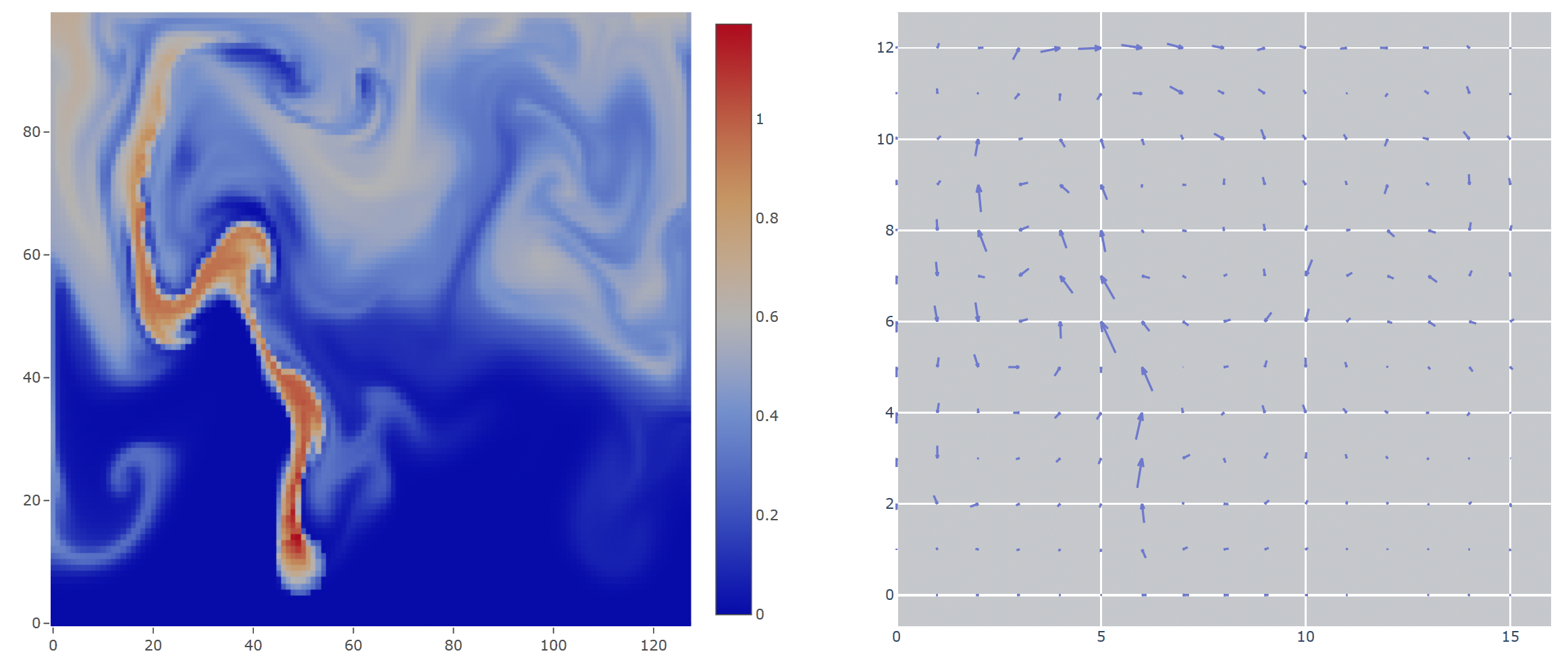ΦFlow is a research-oriented, open-source fluid simulation toolkit. It is written mostly in Python and can use both NumPy and TensorFlow for execution.
Having all functionality of a fluid simulation running in TensorFlow opens up the possibility of back-propagating gradients through the simulation as well as running the simulation on GPUs.
- Variety of built-in fully-differentiable simulations, ranging from Burgers and Navier-Stokes to the Schrödinger equation.
- Tight integration with TensorFlow and PyTorch (experimental) allowing for straightforward neural network training with fully differentiable simulations that run on the GPU.
- Object-oriented architecture enabling concise and expressive code, designed for ease of use and extensibility.
- Reusable simulation code, independent of backend and dimensionality, i.e. the exact same code can run a 2D fluid sim using NumPy and a 3D fluid sim on the GPU using TensorFlow or PyTorch.
- Flexible, easy-to-use web interface featuring live visualizations and interactive controls that can affect simulations or network training on the fly.
To install ΦFlow with web interface, run:
$ pip install phiflow[gui]Install TensorFlow or PyTorch in addition to ΦFlow to enable machine learning capabilities and GPU execution.
See the detailed installation instructions on how to compile the custom CUDA operators and verify your installation.
| Index | Demos / Tests | Source |
|---|
If you would like to get right into it and have a look at some code, check out the tutorial notebook on Google Colab. It lets you run fluid simulations with ΦFlow in the browser.
The following introductory demos are also helpful to get started with writing your own app using ΦFlow:
- simpleplume.py: Runs a fluid simulation and displays it in the browser
- optimize_pressure.py: Uses TensorFlow to optimize a velocity channel. TensorBoard can be started from the GUI and displays the loss.
The simulation overview explains how to run predefined simulations using either the NumPy or TensorFlow backend. It also introduces the GUI.
To learn how specific simulations are implemented, check out the documentation for Fluids or read about staggered grids or pressure solvers.
Writing a ΦFlow Application introduces the high-level classes and explains how to use the ΦFlow GUI for displaying a simulation.
For I/O and data management, see the data documentation or the scene format specification.
For training machine learning models, this document gives an introduction into writing a GUI-enabled application.
The simulation code design documentation provides a deeper look into the object-oriented code design of simulations.
All simulations of continuous systems are based on the Field API and underlying all states is the struct API.
The software architecture documentation shows the building blocks of ΦFlow and the module dependencies.
The Version history lists all major changes since release.
TensorBoard: Live supervision does not work when running a local app that writes to a remote directory.
Resampling / Advection: NumPy interpolation handles the boundaries slightly differently than TensorFlow.
Contributions are welcome! Check out this document for guidelines.
This work is supported by the ERC Starting Grant realFlow (StG-2015-637014) and the Intel Intelligent Systems Lab.


